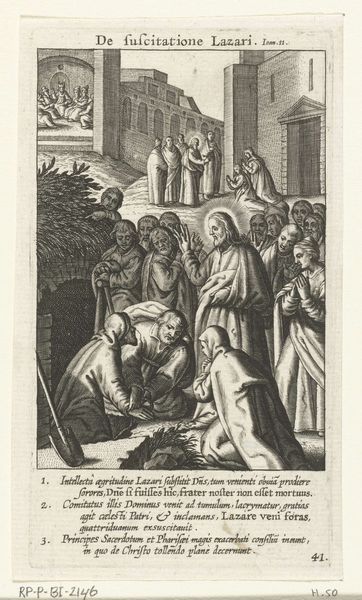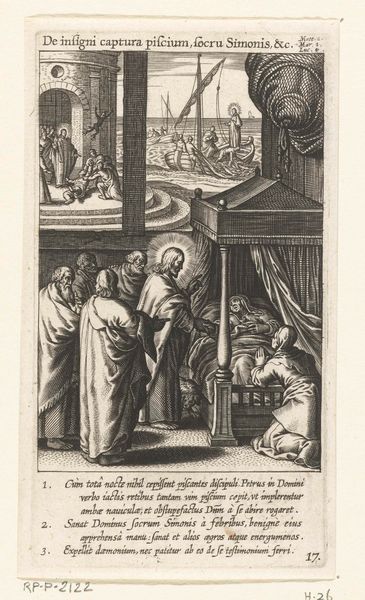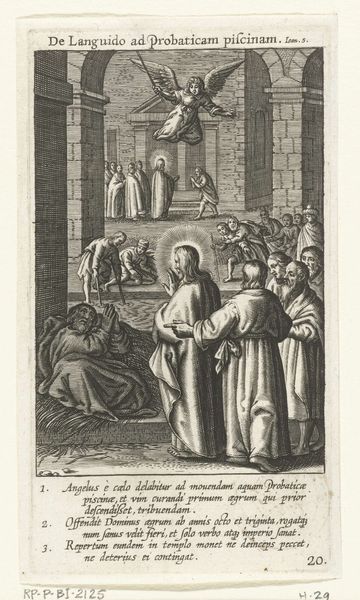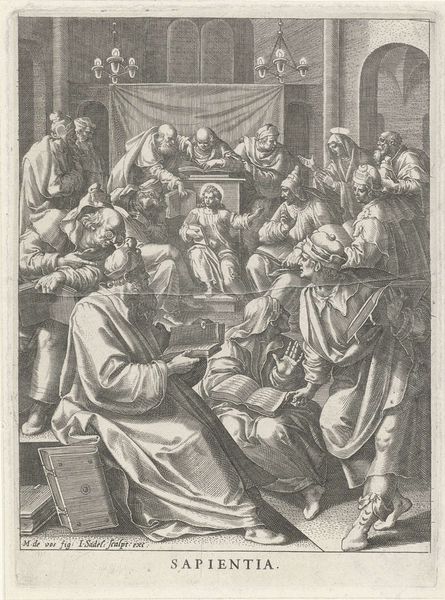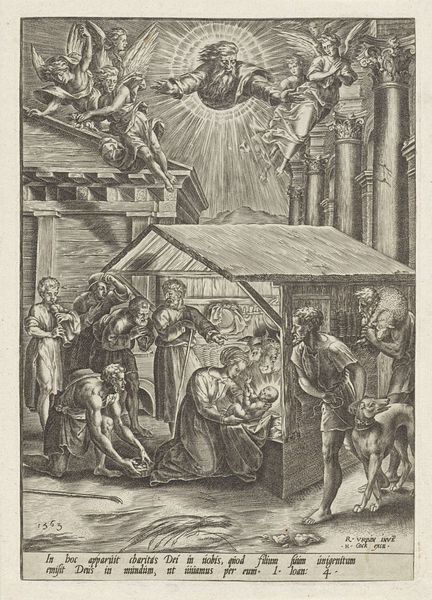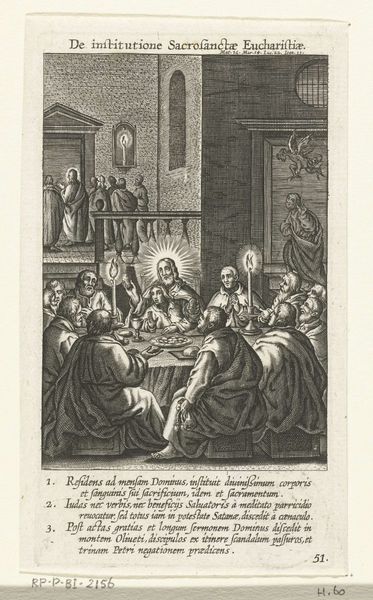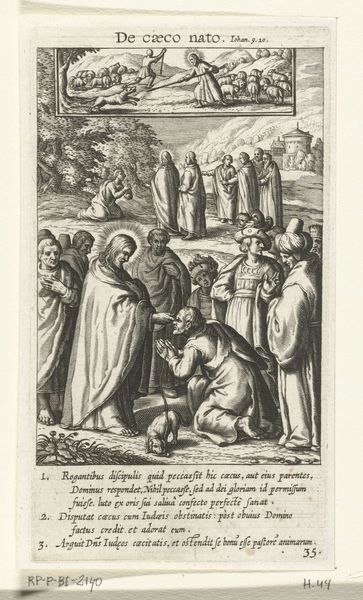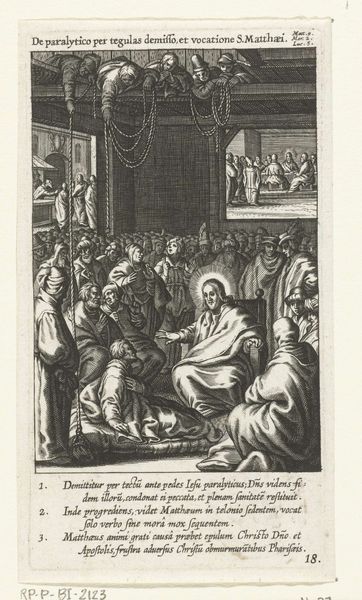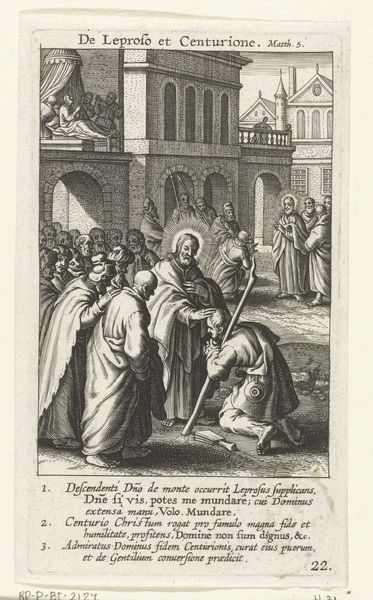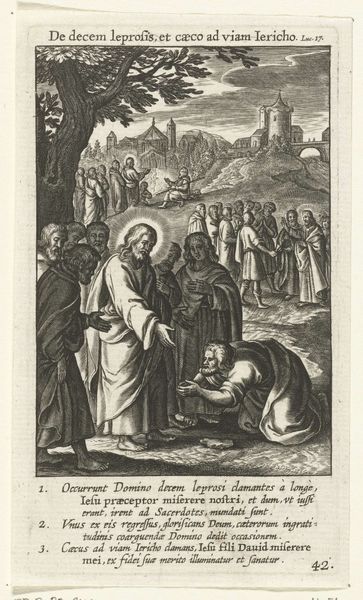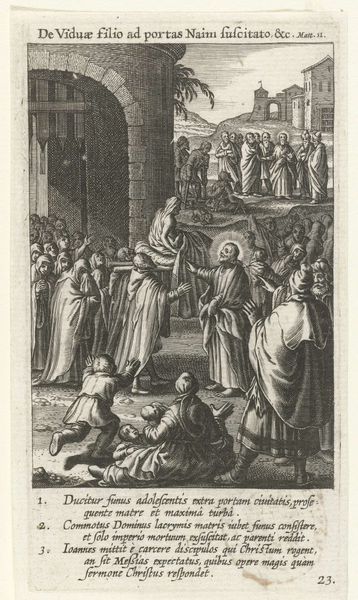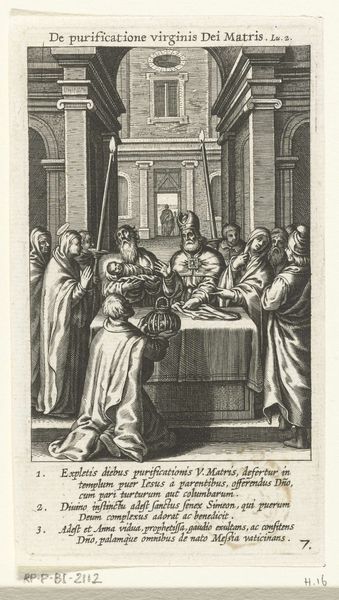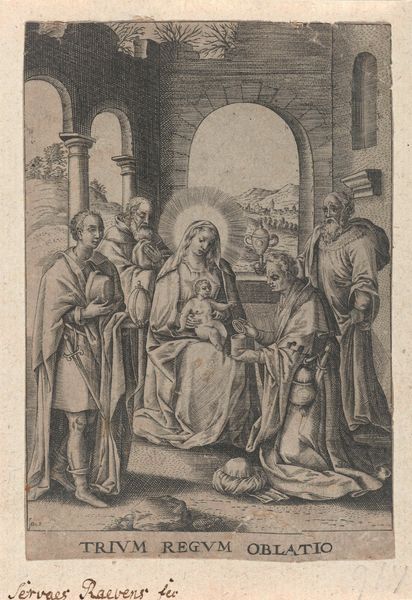
print, engraving
#
baroque
# print
#
pen illustration
#
old engraving style
#
figuration
#
line
#
history-painting
#
academic-art
#
engraving
Dimensions: height 134 mm, width 76 mm
Copyright: Rijks Museum: Open Domain
Curator: Welcome. The work before us, titled "Christus wast de voeten van de apostelen," roughly translated as "Christ Washing the Feet of the Apostles," is attributed to Boëtius Adamsz. Bolswert and thought to have been produced sometime between 1590 and 1622. It is currently held in the collection of the Rijksmuseum. Editor: The starkness of the lines immediately strikes me. It creates a rather solemn, contemplative mood, don't you think? The tight composition, with the figures almost crowded together, amplifies that feeling. Curator: Indeed. Consider the means of production here. Bolswert created this image as a print—likely an engraving. Each line was meticulously carved into a metal plate, demanding an intense labor to transfer religious iconography into a reproducible format. The economic implications of such an act are rather noteworthy: to disseminate faith to the masses through the power of the printing press. Editor: Absolutely. Focusing on the visual elements, the linear quality—the deliberate etching—gives a certain purity to the scene, emphasizing the gestures and expressions of Christ and the apostles. The dramatic chiaroscuro, achieved solely through line work, adds a layer of depth and spiritual weight. Semiotically speaking, the halos around Christ and the implied hierarchy underscore his divinity. Curator: Consider, too, the context of workshops in the 17th century, and the nature of reproducibility itself as impacting conceptions of artistry. What was copied versus original work at this time? Was the print meant for a book? To understand prints, we must account for the system in which it circulated as much as any "aura". Editor: Agreed, though, look closer. See how the artist uses line weight to create areas of emphasis? The face of Christ, the texture of the robes – it all contributes to a hierarchy of visual information within the overall composition. There’s a real control and articulation of visual language happening here that makes one pause and feel like they are a voyeur in a crucial biblical scene. Curator: It’s interesting how examining both the material and formal qualities enhances our comprehension of this piece. Thank you, the visual unpacking gave me insights to continue contextualizing its socio-economic status. Editor: A pleasure. Indeed, our conversation serves to highlight the diverse avenues through which we might engage with art.
Comments
No comments
Be the first to comment and join the conversation on the ultimate creative platform.
